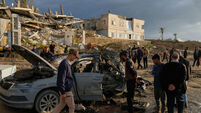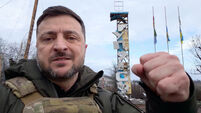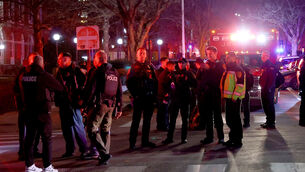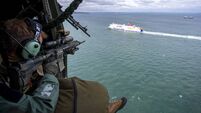Afraid of life, scared to give up on the dead
Death is eating through a book of lives when he selects his next victim with a tick of his pen and a funeral swiftly ensues.
In the next frame, Death is crazed, flicking through page after page in a frenzy. The final frame shows a horrific heap of human carcasses piled high on top of one another.














